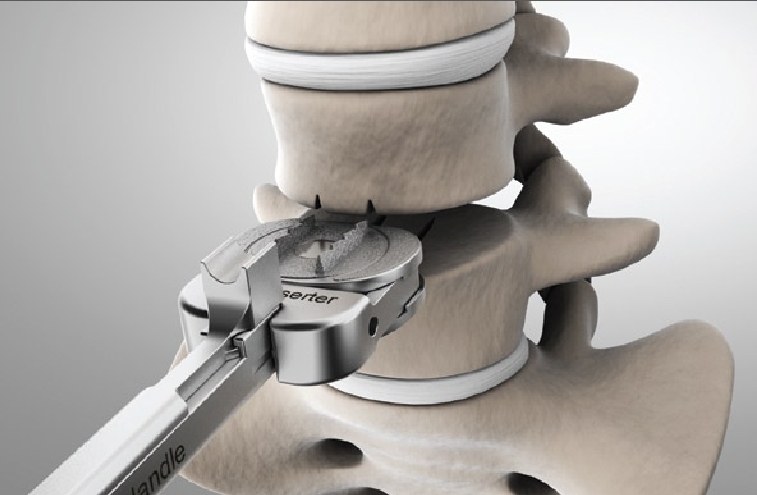doi: 10.1007/s10143-022-01747-x.
Online ahead of print.
Affiliations
Affiliations
- 1 Spine Center, Matsudo City General Hospital, 993-1, Sendabori, Matsudo, Chiba, 270-2296, Japan. [email protected].
- 2 Spine Center, Matsudo Orthopaedic Hospital, 1-161, Asahicho, Matsudo, Chiba, 271-0043, Japan.
- 3 Spine Center, Matsudo City General Hospital, 993-1, Sendabori, Matsudo, Chiba, 270-2296, Japan.
Item in Clipboard
Tomohiro Miyashita et al.
Neurosurg Rev.
.
Display options
Format
doi: 10.1007/s10143-022-01747-x.
Online ahead of print.
Affiliations
- 1 Spine Center, Matsudo City General Hospital, 993-1, Sendabori, Matsudo, Chiba, 270-2296, Japan. [email protected].
- 2 Spine Center, Matsudo Orthopaedic Hospital, 1-161, Asahicho, Matsudo, Chiba, 271-0043, Japan.
- 3 Spine Center, Matsudo City General Hospital, 993-1, Sendabori, Matsudo, Chiba, 270-2296, Japan.
Item in Clipboard
Display options
Format
Abstract
Many authors have reported no significant differences in clinical outcomes between posterolateral fusion (PLF) and interbody fusion, as well as satisfactory long-term outcomes after PLF. Facet fusion (FF), a minimally invasive evolution of PLF, has also resulted in good clinical outcomes. This study aimed to assess the clinical outcomes 5 years after FF for degenerative lumbar spondylolisthesis (DLS) and determine whether good clinical outcomes were maintained after FF. Records of 115 patients who underwent FF for single-level DLS with at least 5 years of follow-up were retrospectively studied. The therapeutic effectiveness of FF was assessed as a clinical outcome using the Japanese Orthopaedic Association Back Pain Evaluation Questionnaire (JOABPEQ), the Roland-Morris Disability Questionnaire (RMDQ), and the visual analogue scale (VAS) preoperatively and at 1 and 5 years postoperatively. Computed tomography was performed for fusion confirmation. The revision surgery rate was also evaluated. The JOABPEQ category scores demonstrated therapeutic effectiveness in 81.7% of patients at 1 year postoperatively and 81.4% of patients at 5 years postoperatively for low back pain; the corresponding proportions for walking ability were 93.8% and 86.6%, respectively. There were no significant differences in therapeutic effectiveness at 1 and 5 years postoperatively for any category, including the RMDQ and VAS scores. The fusion rate was 90.4% at the final follow-up. Four patients required revision surgery for adjacent segment disease 1-5 years after the first surgery (revision surgery rate, 3.5%). Good clinical outcomes were maintained 5 years after FF, and FF had an extremely low revision surgery rate.
Keywords:
Adjacent segment disease; Facet joint fusion; Fusion rate; In situ fusion; Nonunion; Posterolateral fusion.
© 2022. The Author(s), under exclusive licence to Springer-Verlag GmbH Germany, part of Springer Nature.
References
-
-
Colman MW, Baronne LM 2nd, Brodke DS, Woodbury AM, Annis P, Lawrence BD (2019) Perioperative effects associated with the surgical treatment of degenerative spondylolisthesis: interbody versus no interbody. Clin Spine Surg 32(2):E71–E77. https://doi.org/10.1097/BSD.0000000000000729
–
DOI
–
PubMed
-
-
-
Kim KT, Lee SH, Lee YH, Bae SC, Suk KS (2006) Clinical outcomes of 3 fusion methods through the posterior approach in the lumbar spine. Spine (Phila Pa 1976) 31(12):1351–7 discussion 1358.
-
-
-
Kuraishi S, Takahashi J, Mukaiyama K, Shimizu M, Ikegami S, Futatsugi T, Hirabayashi H, Ogihara N, Hashidate H, Tateiwa Y, Kinoshita H, Kato H (2016) Comparison of clinical and radiological results of posterolateral fusion and posterior lumbar interbody fusion in the treatment of L4 degenerative lumbar spondylolisthesis. Asian Spine J 10(1):143–152
–
DOI
-
-
-
McAnany SJ, Baird EO, Qureshi SA, Hecht AC, Heller JG, Anderson PA (2016) Posterolateral fusion versus interbody fusion for degenerative spondylolisthesis: a systematic review and meta-analysis. Spine (Phila Pa 1976) 41(23):E1408-E1414.
-
-
-
Andersen T, Videbæk TS, Hansen ES, Bünger C, Christensen FB (2008) The positive effect of posterolateral lumbar spinal fusion is preserved at long-term follow-up: a RCT with 11–13 year follow-up. Eur Spine J 17(2):272–280 (Epub 2007 Sep 12)
–
DOI
-
Cite

